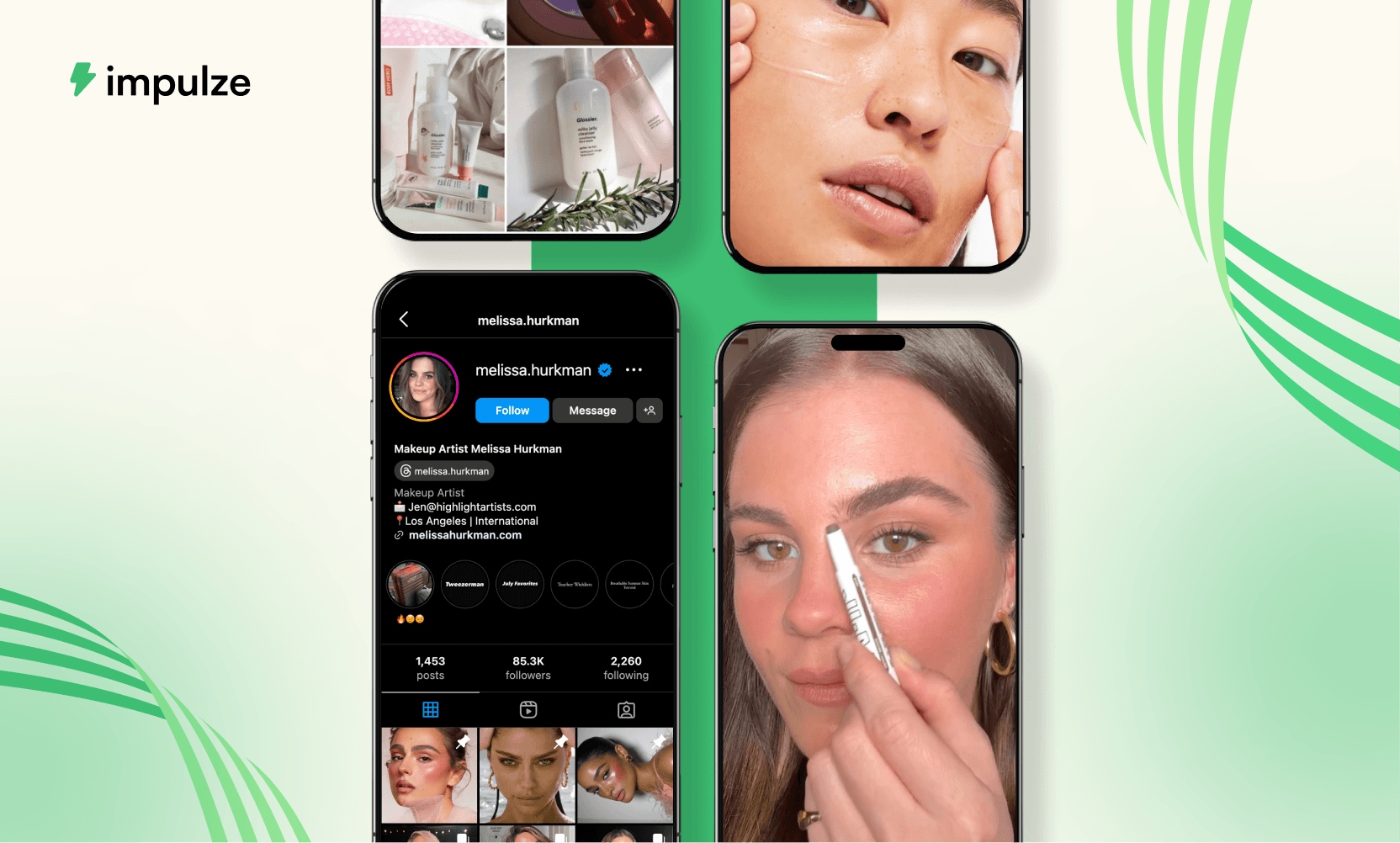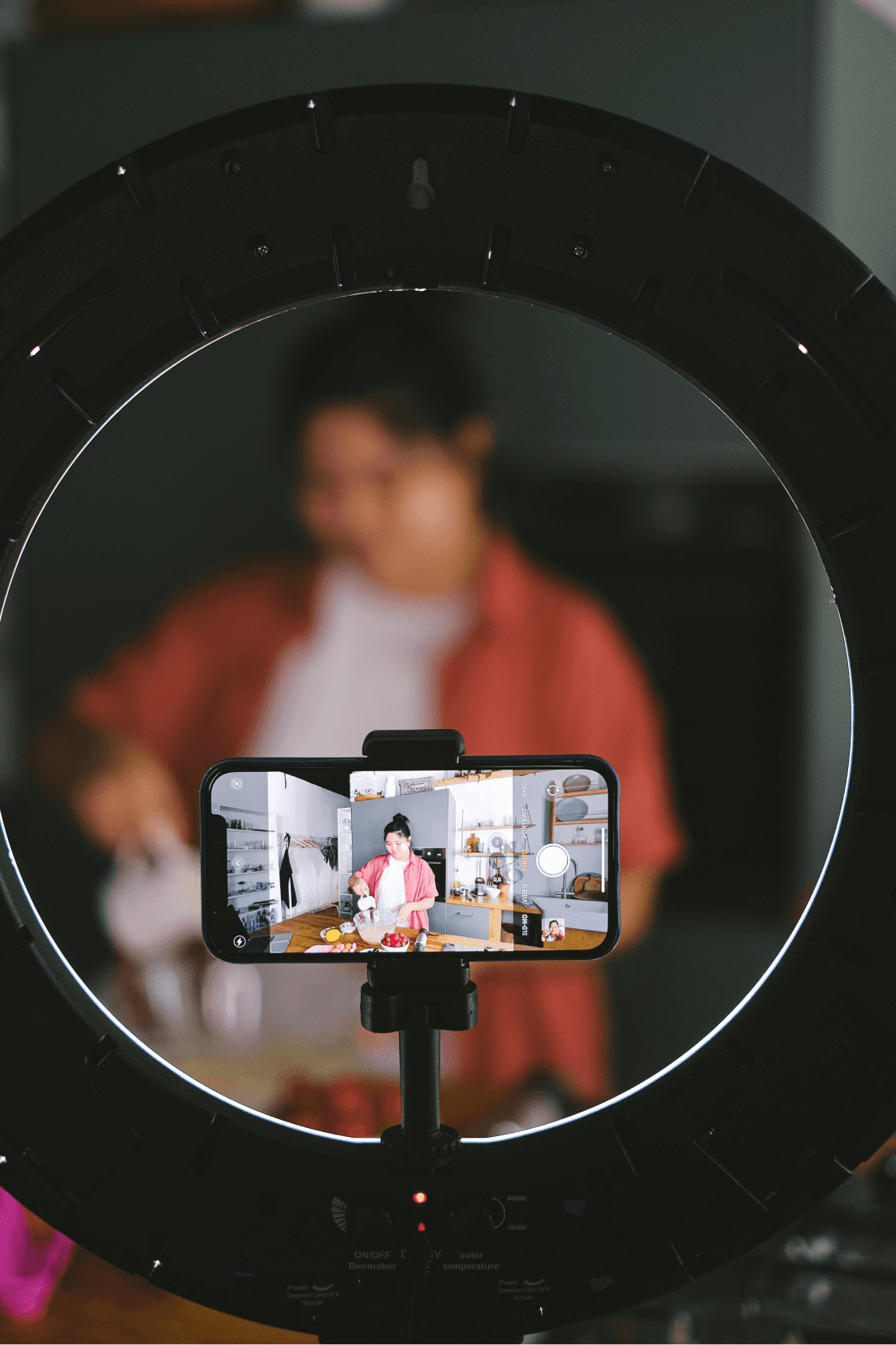Dec 13, 2024
11 MIN READ
INFLUENCER MARKETING
INFLUENCER MARKETING
Top 10 Influencer Marketing Best Practices for 2025
Top 10 Influencer Marketing Best Practices for 2025
Top 10 Influencer Marketing Best Practices for 2025

Aishwarya Taskar
Aishwarya Taskar
Aishwarya Taskar
Aishwarya Taskar
Content Marketer @impulze.ai




Blog in Short ⏱️
Blog in Short ⏱️
A quick glance at the highlights—perfect for when you're short on time.
A quick glance at the highlights—perfect for when you're short on time.
This blog unveils ten actionable strategies, such as setting KPIs that match your goals and collaborating with influencers who align with your brand to elevate your influencer marketing efforts.
Be transparent about your partnerships, draft good contracts, and build long-term relationships with influencers to get the most ROI from your influencer marketing efforts.
Before starting, it's crucial to pick the right influencer and use tools to determine if this influencer’s followers match your target audience.
Did you know that by 2029, the influencer advertising market in the U.S. is projected to reach a market volume of US$8.74bn? Influencer marketing is here to stay, so nailing your influencer marketing strategies is non-negotiable.
But here’s the deal: the influencer marketing landscape changes faster than Joey Tribbiani can say, “How you doin’?”

To keep your campaigns relevant, impactful, and authentic, it’s crucial to follow best practices. In this blog, we’ll explore ten essential best practices to ensure your influencer collaborations not only meet but exceed your goals. Read on to know more.
Top Influencer Marketing Best Practices for Every Brand
1 - Set Clear Key Performance Indicators
Clear key performance indicators (KPIs) provide direction and measurable milestones for your campaigns.
If your goal is brand awareness, track metrics like:
Growth in social media followers.
Increase in brand mentions.
Boost in organic search volume.
On the other hand, if sales are your focus, your KPIs might include conversion rates and revenue generated. For example, when Glossier launched their Milky Jelly Cleanser, they collaborated with influencers to drive awareness and tracked sales spikes to measure success. The result? A cult-favorite product with massive social proof.

Deciding clear KPIs is one of the most important influencer marketing best practices. By aligning your objectives and KPIs, you can set your campaign up for success while keeping everyone on the same page.
2 - Choosing the Right Influencer
Finding influencers isn’t just about follower count—it’s about fit. Would you trust Dwight Schrute from The Office to sell yoga mats? Probably not. That’s why it’s crucial to select influencers whose values, niche, and audience align with your brand.
Here’s how you can evaluate influencers effectively:
Engagement Rates: An influencer with 50,000 followers and 10% engagement is often more valuable than one with 500,000 followers and 1% engagement.
Audience Demographics: Ask for insights about their audience’s age, gender, and location. Influencer discovery tools like impulze.ai can simplify this.
Authenticity: Check for genuine content and meaningful interactions with followers.

3 - Ask the Right Questions
Before sealing the deal with an influencer, a little detective work goes a long way. Here’s your cheat sheet:
“Can you share your audience demographics?” This ensures their followers align with your target audience. Or, if you don’t want to find out about audience demographics yourself, you can use influencer marketing tools to check them.
“What’s your typical engagement rate?” Numbers don’t lie.
“Have you worked with similar brands?” Past collaborations can indicate compatibility.
For example, if you’re promoting a plant-based snack, an influencer who’s previously worked with eco-friendly brands could be a good match.

Remember that influencer marketing platforms can save you from scrolling for hours by offering insights like engagement rates, niches, and follower authenticity.
4 - Be Transparent About Your Partnerships
Transparency isn’t just ethical—it’s effective. Social media users are savvy and do not appreciate it when influencers do not disclose when they are using or promoting sponsored products. Ensure influencers disclose partnerships using hashtags like #ad or #sponsored.
5 - Use Influencer Marketing Tools

Influencer marketing can get messy if you’re juggling spreadsheets, emails, and endless notes. That’s where influencer analysis tools come in handy.
Influencer marketing tools simplify tasks like:
Finding influencers based on location, nice, and engagement.
Analyzing fake followers.
Tracking campaign performance in real-time.
Remember: investing in the right tools isn’t an expense—it’s a long-term investment. For example, H&M used advanced analytics tools to monitor influencer campaigns, which led to a 30% increase in online sales during one of their campaigns.

6 - Allow Creative Freedom
Restricting influencers too much is like telling Phoebe Buffay not to sing ‘Smelly Cat.’ It just doesn’t work.

Influencers know their audience best, so trust their instincts while providing clear brand guidelines. Work with influencers collaboratively to create content that suits your brand and resonates with the influencer’s audiences.
Take Airbnb, for example. When they collaborated with influencers to showcase stays, they allowed them to tell authentic stories about their experiences. The result? Content that felt genuine and relatable, driving both bookings and brand affinity.
7 - Partnering with Micro and Nano Influencers
Sometimes, smaller is better. Nano and micro-influencers might not have millions of followers but boast higher engagement rates and deeply connected audiences.
For instance, a skincare brand promoting a new product for sensitive skin could collaborate with a nano-influencer specializing in sensitive skin beauty tips. Their loyal followers trust their recommendations, which translates to better conversions.
8 - Drafting a Win-Win Contract
Clear contracts are your safety net. A good agreement covers:
Deliverables: Number and type of posts.
Timeline: When content needs to be delivered.
Compensation: Monetary, product-based, or affiliate commissions.
Always include content usage rights to ensure you can repurpose influencer content for your brand’s marketing materials.

9 - Evaluate and Adapt
To gauge success, regularly analyze metrics like engagement rates, conversions, and audience sentiment and adapt accordingly to achieve success with your campaign.
For example, if a clothing brand notices one influencer driving more sales than others, it can double down on that partnership while refining underperforming campaigns.
10 - Long-Term Relationships Over One-Off Campaigns
Consistency builds trust. Partnering with an influencer long-term allows them to genuinely integrate your brand into their content. Think of Nike’s relationship with athletes—it’s built on years of collaboration, creating a sense of authenticity.
Long-term partnerships also reduce onboarding time and costs, making your campaigns more efficient. So, always invest in people and relationships and focus on creating long-term collaborations rather than one-time deals.
The Takeaway
Influencer marketing is part art and part science. By following these best practices, you can ensure that your campaigns are strategic, ethical, and impactful.
Ready to level up your campaigns? Try impulze.ai for a 14-day free trial and discover how easy it is to find influencers, track fake followers, and create data-driven campaigns. Let’s make your brand unforgettable!

Did you know that by 2029, the influencer advertising market in the U.S. is projected to reach a market volume of US$8.74bn? Influencer marketing is here to stay, so nailing your influencer marketing strategies is non-negotiable.
But here’s the deal: the influencer marketing landscape changes faster than Joey Tribbiani can say, “How you doin’?”

To keep your campaigns relevant, impactful, and authentic, it’s crucial to follow best practices. In this blog, we’ll explore ten essential best practices to ensure your influencer collaborations not only meet but exceed your goals. Read on to know more.
Top Influencer Marketing Best Practices for Every Brand
1 - Set Clear Key Performance Indicators
Clear key performance indicators (KPIs) provide direction and measurable milestones for your campaigns.
If your goal is brand awareness, track metrics like:
Growth in social media followers.
Increase in brand mentions.
Boost in organic search volume.
On the other hand, if sales are your focus, your KPIs might include conversion rates and revenue generated. For example, when Glossier launched their Milky Jelly Cleanser, they collaborated with influencers to drive awareness and tracked sales spikes to measure success. The result? A cult-favorite product with massive social proof.

Deciding clear KPIs is one of the most important influencer marketing best practices. By aligning your objectives and KPIs, you can set your campaign up for success while keeping everyone on the same page.
2 - Choosing the Right Influencer
Finding influencers isn’t just about follower count—it’s about fit. Would you trust Dwight Schrute from The Office to sell yoga mats? Probably not. That’s why it’s crucial to select influencers whose values, niche, and audience align with your brand.
Here’s how you can evaluate influencers effectively:
Engagement Rates: An influencer with 50,000 followers and 10% engagement is often more valuable than one with 500,000 followers and 1% engagement.
Audience Demographics: Ask for insights about their audience’s age, gender, and location. Influencer discovery tools like impulze.ai can simplify this.
Authenticity: Check for genuine content and meaningful interactions with followers.

3 - Ask the Right Questions
Before sealing the deal with an influencer, a little detective work goes a long way. Here’s your cheat sheet:
“Can you share your audience demographics?” This ensures their followers align with your target audience. Or, if you don’t want to find out about audience demographics yourself, you can use influencer marketing tools to check them.
“What’s your typical engagement rate?” Numbers don’t lie.
“Have you worked with similar brands?” Past collaborations can indicate compatibility.
For example, if you’re promoting a plant-based snack, an influencer who’s previously worked with eco-friendly brands could be a good match.

Remember that influencer marketing platforms can save you from scrolling for hours by offering insights like engagement rates, niches, and follower authenticity.
4 - Be Transparent About Your Partnerships
Transparency isn’t just ethical—it’s effective. Social media users are savvy and do not appreciate it when influencers do not disclose when they are using or promoting sponsored products. Ensure influencers disclose partnerships using hashtags like #ad or #sponsored.
5 - Use Influencer Marketing Tools

Influencer marketing can get messy if you’re juggling spreadsheets, emails, and endless notes. That’s where influencer analysis tools come in handy.
Influencer marketing tools simplify tasks like:
Finding influencers based on location, nice, and engagement.
Analyzing fake followers.
Tracking campaign performance in real-time.
Remember: investing in the right tools isn’t an expense—it’s a long-term investment. For example, H&M used advanced analytics tools to monitor influencer campaigns, which led to a 30% increase in online sales during one of their campaigns.

6 - Allow Creative Freedom
Restricting influencers too much is like telling Phoebe Buffay not to sing ‘Smelly Cat.’ It just doesn’t work.

Influencers know their audience best, so trust their instincts while providing clear brand guidelines. Work with influencers collaboratively to create content that suits your brand and resonates with the influencer’s audiences.
Take Airbnb, for example. When they collaborated with influencers to showcase stays, they allowed them to tell authentic stories about their experiences. The result? Content that felt genuine and relatable, driving both bookings and brand affinity.
7 - Partnering with Micro and Nano Influencers
Sometimes, smaller is better. Nano and micro-influencers might not have millions of followers but boast higher engagement rates and deeply connected audiences.
For instance, a skincare brand promoting a new product for sensitive skin could collaborate with a nano-influencer specializing in sensitive skin beauty tips. Their loyal followers trust their recommendations, which translates to better conversions.
8 - Drafting a Win-Win Contract
Clear contracts are your safety net. A good agreement covers:
Deliverables: Number and type of posts.
Timeline: When content needs to be delivered.
Compensation: Monetary, product-based, or affiliate commissions.
Always include content usage rights to ensure you can repurpose influencer content for your brand’s marketing materials.

9 - Evaluate and Adapt
To gauge success, regularly analyze metrics like engagement rates, conversions, and audience sentiment and adapt accordingly to achieve success with your campaign.
For example, if a clothing brand notices one influencer driving more sales than others, it can double down on that partnership while refining underperforming campaigns.
10 - Long-Term Relationships Over One-Off Campaigns
Consistency builds trust. Partnering with an influencer long-term allows them to genuinely integrate your brand into their content. Think of Nike’s relationship with athletes—it’s built on years of collaboration, creating a sense of authenticity.
Long-term partnerships also reduce onboarding time and costs, making your campaigns more efficient. So, always invest in people and relationships and focus on creating long-term collaborations rather than one-time deals.
The Takeaway
Influencer marketing is part art and part science. By following these best practices, you can ensure that your campaigns are strategic, ethical, and impactful.
Ready to level up your campaigns? Try impulze.ai for a 14-day free trial and discover how easy it is to find influencers, track fake followers, and create data-driven campaigns. Let’s make your brand unforgettable!

Frequently Asked Questions
What is the best strategy for influencer marketing?
What is the best strategy for influencer marketing?
What is the best strategy for influencer marketing?
What are the 3 R's of influencer marketing?
What are the 3 R's of influencer marketing?
What are the 3 R's of influencer marketing?
What are the four Ps of influencer marketing?
What are the four Ps of influencer marketing?
What are the four Ps of influencer marketing?
Which is the most effective form of influencer marketing?
Which is the most effective form of influencer marketing?
Which is the most effective form of influencer marketing?
Do Gen Z trust influencers?
Do Gen Z trust influencers?
Do Gen Z trust influencers?
What is the average ROI for influencer marketing?
What is the average ROI for influencer marketing?
What is the average ROI for influencer marketing?
What marketing has the highest ROI?
What marketing has the highest ROI?
What marketing has the highest ROI?
Author Bio
Author Bio


Aishwarya Taskar
Aishwarya Taskar
Aishwarya Taskar is a full-time writer. She has studied journalism and marketing. In her free time, she loves watching films and spending time with animals. You can learn more about her here.
Aishwarya Taskar is a full-time writer. She has studied journalism and marketing. In her free time, she loves watching films and spending time with animals. You can learn more about her here.
We Also Recommend To Read

Find, analyze, and contact influencers from a database of over 250 million profiles.
Find, analyze, and contact influencers from a database of over 250 million profiles.
Find, analyze, and contact influencers from a database of over 250 million profiles.
Join over 15000+ SocialiQ users who have installed this free Chrome extension to search, analyze, save, and contact influencers directly on TikTok, YouTube, and Instagram.
20K+ Active Users
May be Later
Join over 15000+ SocialiQ users who have installed this free Chrome extension to search, analyze, save, and contact influencers directly on TikTok, YouTube, and Instagram.
20K+ Active Users
May be Later
Join over 15000+ SocialiQ users who have installed this free Chrome extension to search, analyze, save, and contact influencers directly on TikTok, YouTube, and Instagram.
20K+ Active Users
May be Later





